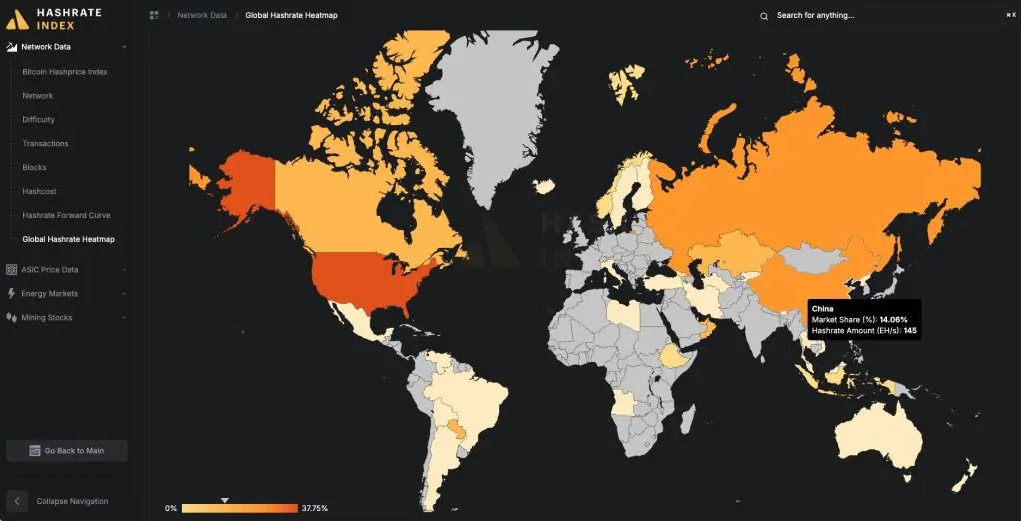
China has quietly worked its way back into the top three global Bitcoin miners, holding about 14% of the network’s total computing power.
Reports have disclosed that this share is roughly equal to 145 EH/s (exahashes per second), putting the country behind the United States and Russia in raw hashrate.
The shift comes despite an official crackdown on mining that started in 2021, when many operations moved overseas.
According to data from Hashrate Index and other tracking services, the rebound is real and measurable. Some mining activity now appears to be running in Xinjiang and Sichuan, where power costs can be low at certain times.
Based on reports, operators are using a mix of legacy farms, small private setups and cloud-like arrangements that mask mining as other forms of compute work.
Why Bitcoin Mining Returned To China
Cheap electricity is one driver. Another is that factory and data center capacity can be reused without large new investments. Manufacturers that supply mining rigs also report stronger sales back home.

Source: Hashrate Index
Canaan, a maker of mining machines, has seen a pickup in Chinese demand. That suggests money is again flowing into hardware and setup, not just into restarting old machines.
At the same time, revenue from mining has been under pressure. Hashprice — the estimated payout per unit of hashrate — fell to record lows this year as Bitcoin prices and fees weakened and mining difficulty rose.
That decline puts strain on smaller players and makes efficiency and low-cost power more important than ever.
What This Means For The Network
A return of significant mining capacity to China raises two kinds of concern. One is over concentration: if too much hashrate clusters in particular regions or systems, the network’s geographic diversity shrinks.
The other is enforcement uncertainty. Mining remains banned on paper in many parts of China, yet enforcement appears uneven. As a result, some operations run under the radar while others run in partnerships with local firms that provide energy and space.
Publicly available maps track hashrate by country, but exact figures can shift fast. The best current snapshot points to China at 14% and about 145 EH/s of capacity, but those numbers will change as miners add or remove machines.
The United States and Russia remain the largest hosts, and that fact does limit immediate systemic risk.
What Analysts Are Watching
Analysts will watch three things closely: whether Chinese authorities change enforcement, how hardware makers like Canaan perform in coming quarters, and whether hashprice recovers if Bitcoin’s price strengthens.
If policy softens in some regions, more visible growth could follow. If enforcement tightens, activity could scatter again, just as it did after the 2021 ban.
Featured image from Unsplash, chart from TradingView


















